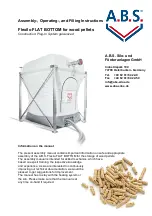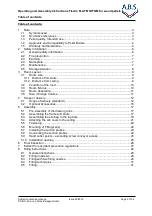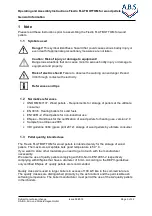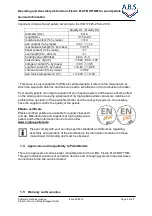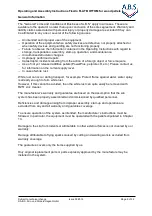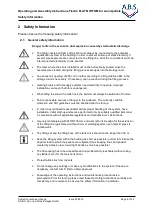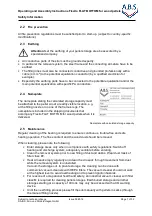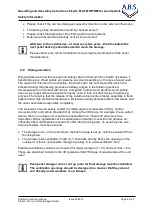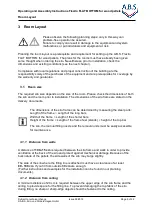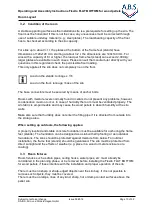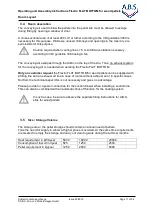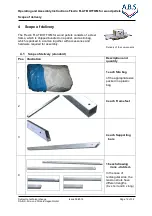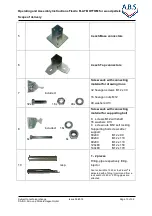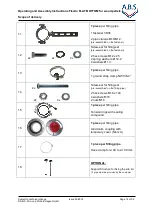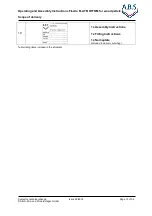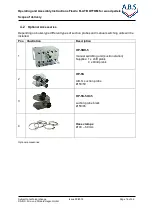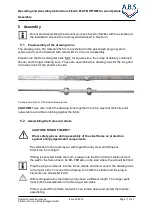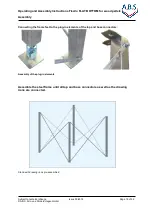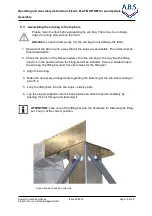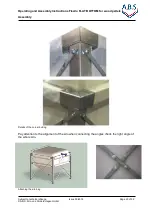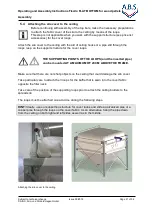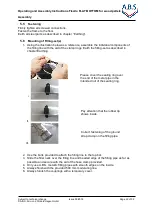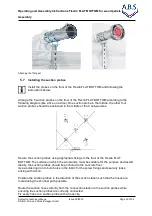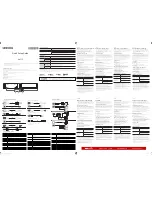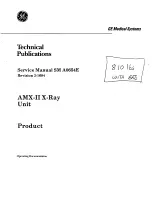
Operating and Assembly Instructions Flexilo FLAT BOTTOM for wood pellets
Safety Information
Subject to technical change
Issue 09/2016
Page 8 of 32
©A.B.S. Silo- und Förderanlagen GmbH
•
Please check if the silo has damages caused by rodents or other external influences.
•
The bolting of the steel frame should be checked as well.
•
Please check the fastenings of the Filling and removal systems.
•
Make sure that all other openings on the silo are closed.
After two to three deliveries - at least every two years - the time before the
next pellet delivery should be used to clean the storage.
Please observe the recommendations concerning the maintenance of the boiler
manufacturers.
2.6
Storage Aeration
Wood pellets are a fuel that is environmentally safe and from which no health risk arises, if
handled properly. Wood pellets can develop an odour depending on the type of wood used.
The reason for this lies in the extractive, the wood's own oils, fats and resins, which are
activated during the pressing process and slowly outgas in the following weeks or
decompose when in contact with the air. Compared to other wood products wood pellets
have a very large surface area and are heavily used in their cell structure by the pressing
process. The result is that the release of the volatile components is faster, especially in fresh
pellets and at high ambient temperatures. Emissions usually decrease after a few weeks and
the odour associated evaporates completely.
The emissions of wood pellets consist of volatile organic compounds (VOCs), carbon
monoxide (CO) and carbon dioxide (CO2). Among the VOCs are, for example, the so-called
terrene that in rare cases occur and are responsible for a "chemical" odour (such as
turpentine). Other ingredients such as aldehydes and carbon monoxide can produce an
unhealthy effect and therefore should not enter into the living area. To avoid any risk, two
simple principles must be observed.
•
The storage room, or the room where the final storage is set up, must be sealed off from
the living area.
•
The storage room ventilation (> 200 cm ²) should be directly above the openings to the
outside or, if this is not possible, through openings in to a well-ventilated room.
Elaborate ventilation solutions are required for larger storages (> 10 t) and vent lines > 5 m.
These are described in detail in the VDI guideline 3464 "Storage of wood pellets at the end
user ".
Each pellet storage room or set up room for final storage must be ventilated.
The ventilation openings should be designed in a manner that they do not
end directly under windows or air intakes.

